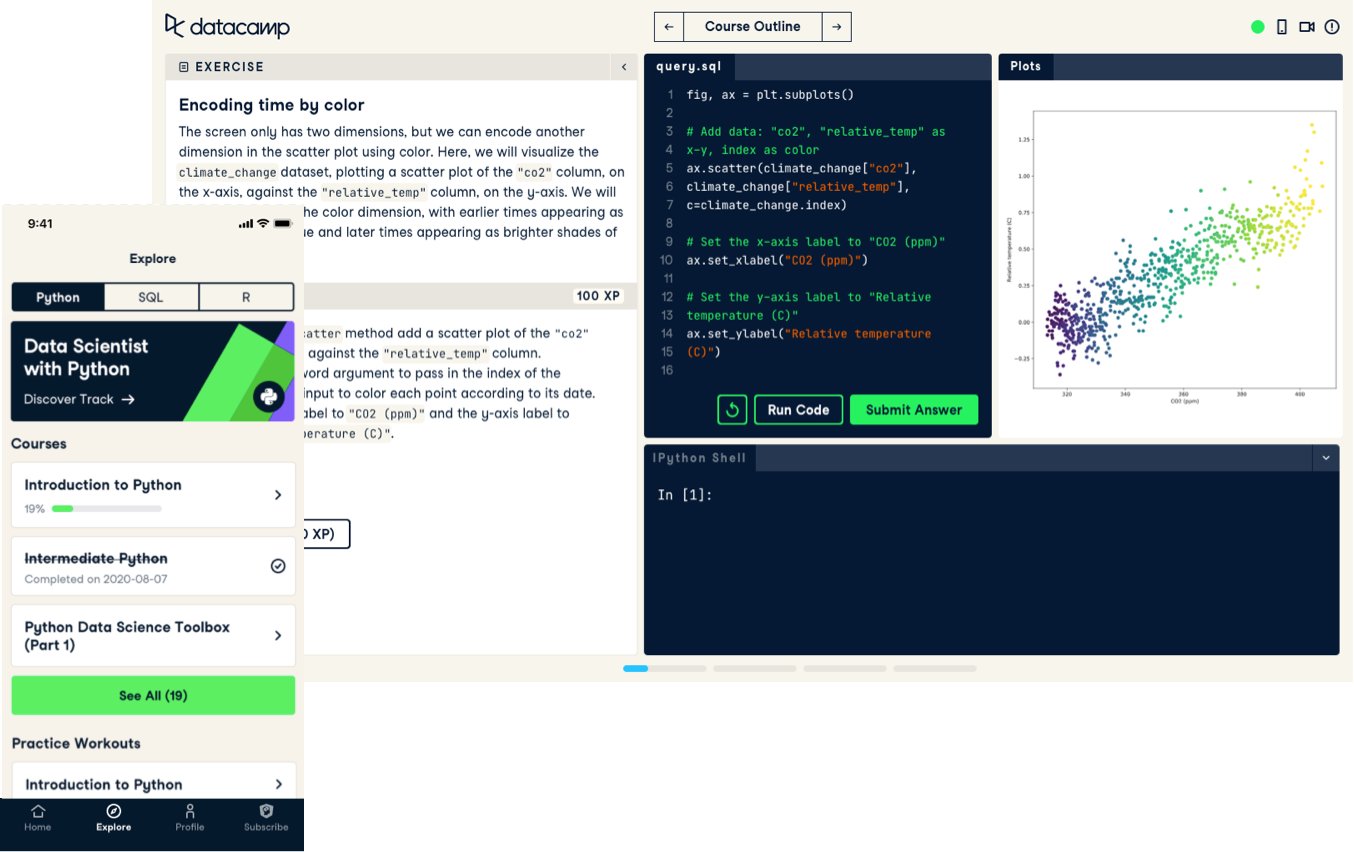Introduction to Python
Master the basics of data analysis with Python in just four hours. This online course will introduce the Python interface and explore popular packages.
Follow short videos led by expert instructors and then practice what you’ve learned with interactive exercises in your browser.

Master the basics of data analysis with Python in just four hours. This online course will introduce the Python interface and explore popular packages.
Learn how to create and query relational databases using SQL in just two hours.
Master the basics of data analysis in R, including vectors, lists, and data frames, and practice R with real data sets.
Master the Power BI basics and learn to use the data visualization software to build impactful reports.
Learn how to use ChatGPT. Discover best practices for writing prompts and explore common business use cases for the powerful AI tool.
Accompanied at every step with hands-on practice queries, this course teaches you everything you need to know to analyze data using your own SQL code today!
An introduction to data science with no coding involved.
Level up your data science skills by creating visualizations using Matplotlib and manipulating DataFrames with pandas.
Learn the basic concepts of Artificial Intelligence, such as machine learning, deep learning, NLP, generative AI, and more.
Learn how to import and clean data, calculate statistics, and create visualizations with pandas.
Level up your SQL knowledge and learn to join tables together, apply relational set theory, and work with subqueries.
A non-coding introduction to cloud computing, covering key concepts, terminology, and tools.
Grow your machine learning skills with scikit-learn in Python. Use real-world datasets in this interactive course and learn how to make powerful predictions!
Master the Excel basics and learn to use this spreadsheet tool to conduct impactful analysis.
Master the fundamentals of programming in Python. No prior knowledge required!
Learn how to analyze data with PivotTables and intermediate logical functions before moving on to tools such as what-if analysis and forecasting.
Discover how data engineers lay the groundwork that makes data science possible. No coding involved!
An introduction to machine learning with no coding involved.
Master the complex SQL queries necessary to answer a wide variety of data science questions and prepare robust data sets for analysis in PostgreSQL.
Gain an introduction to data in this hands-on course. Learn the basics of data types and structures, the DIKW framework, data ethics and more.
Start your Tableau journey with our Introduction to Tableau course. Discover Tableau basics such as its features and dashboards.
Data is all around us, which makes data literacy an essential life skill.
Grow your statistical skills and learn how to collect, analyze, and draw accurate conclusions from data using Python.
Enhance your Power BI knowledge, by learning the fundamentals of Data Analysis Expressions (DAX) such as calculated columns, tables, and measures.
Get started on the path to exploring and visualizing your own data with the tidyverse, a powerful and popular collection of data science tools within R.
Continue your journey to becoming an R ninja by learning about conditional statements, loops, and vector functions.
Learn the fundamentals of statistics, including measures of center and spread, probability distributions, and hypothesis testing with no coding involved!
Learn how to write effective prompts with ChatGPT to apply in your workflow today.
Learn to combine data from multiple tables by joining data together using pandas.
Power BI is a powerful data visualization tool that can be used in reports and dashboards.